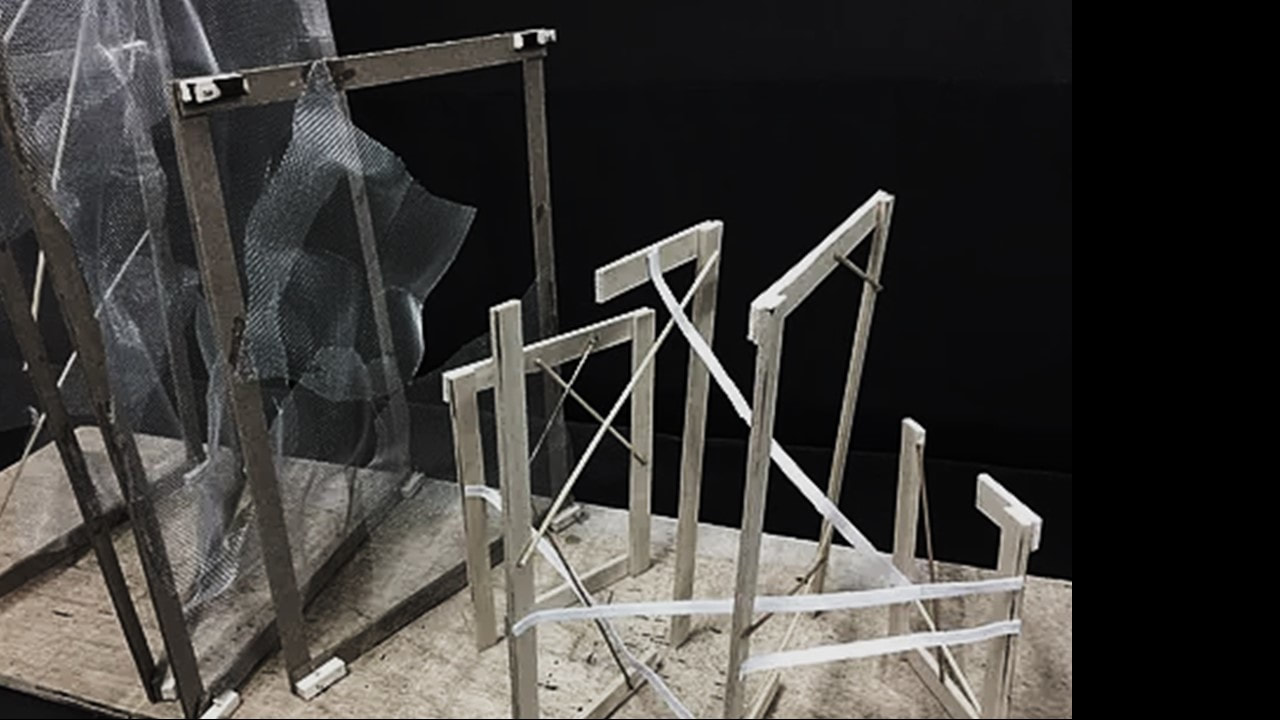Act 08: TENSIGRITY OF EGO
Architecturally, the term “Tensigrity” is relatively based on the use of isolated components in compression inside a net of continuous tension. As reading through the book, the word “Tension” came across my mind. Sybil Kathigasu thought all of her way persisted in her efforts: she secretly kept shortwave radio sets and listened to BBC broadcast, quietly supplied medicines, medical services and information to the resistance forces until they were arrested in 1943. Her act of heroism is not without reason as she wanted to protect her family and friends. She was determined, brave and intelligent enough to face all the hardships but meanwhile she was tortured under stress, repressed emotions and tension. Once it is stretched to its maximum, it broke.
“The people are not strong, the people can never be strong.” Sybil Kathigasu, who received the George Medal for Gallantry several months before her death, well known as a freedom fighter. After residing at No. 74, Main Street in Papan, Sybil Kathigasu secretly kept shortwave radio sets, listened to BBC broadcasts and quietly provided medical treatment, much-needed medicines and information to the MPAJA (Malayan People’s Anti-Japanese Army) soldiers operating in the Kledang jungles. She was eventually arrested by Kempeitai. Despite being interrogated by her captors, Sybil revealed little or nothing and was suffered all kinds of torture while in captivity, including the infamous “water-treatment”. From all we can see, Sybil never yield ground to enemies but the pressure she endured was what we cannot manage to bear.
There were eight frames in total for the tensegrity installation. They were there to portray the life frame of Sybil Kathigasu who bravely fight back the Japanese during their invasion in Malaya. To indicate the severe pain and complication of emotions she being suffered during her fight in Malaya, some roughly cut metal wire mesh were chosen. The white rubbers tied along the last four frames signify the tension and pressure as she might undergo: depression, anxiety and worry which I wanted to covey through this narrative installation.
Before started doing the final, a mock up was done to experiment the arrangement and ways to portray the meaning of “Tension” into a three dimensional form installation. All materials chosen were based on what its appearance and characteristics can bring to us. Initially, balsa woods were used for all the life frames but wooden boards were used in the middle part instead as they brought me the feeling of suffer and hardship which telling the story of Sybil fight against all circumstances. She was then become disabled. To deliver this, the incomplete balsa frames were selected to indicate that her life was no that ideal after the torture she suffered under the Japanese.
As a whole, Sybil Kathigasu is without doubt a Malaysian heroine. From a director named Bernard Chauly, he said: “It is one woman’s struggle and sacrifice driven by deep personal conviction for justice, in the face of inhumanity at a time when Malaya was upside down. For those who’re familiar and passionate about her story, this series need no introduction. For the majority of the Malaysian public, the simple message is: here is a story we should all know.” For me, like many others did in war effort, she gave the ultimate sacrifice to the nation in order that we may live in peace and security. The tension and stress from her own self and others made her suffered a lot but at last she did what she wants. Fortunately, she lived to tell her story. In conclusion, it is a rare historiography of a true national heroine.
“The people are not strong, the people can never be strong.” Sybil Kathigasu, who received the George Medal for Gallantry several months before her death, well known as a freedom fighter. After residing at No. 74, Main Street in Papan, Sybil Kathigasu secretly kept shortwave radio sets, listened to BBC broadcasts and quietly provided medical treatment, much-needed medicines and information to the MPAJA (Malayan People’s Anti-Japanese Army) soldiers operating in the Kledang jungles. She was eventually arrested by Kempeitai. Despite being interrogated by her captors, Sybil revealed little or nothing and was suffered all kinds of torture while in captivity, including the infamous “water-treatment”. From all we can see, Sybil never yield ground to enemies but the pressure she endured was what we cannot manage to bear.
There were eight frames in total for the tensegrity installation. They were there to portray the life frame of Sybil Kathigasu who bravely fight back the Japanese during their invasion in Malaya. To indicate the severe pain and complication of emotions she being suffered during her fight in Malaya, some roughly cut metal wire mesh were chosen. The white rubbers tied along the last four frames signify the tension and pressure as she might undergo: depression, anxiety and worry which I wanted to covey through this narrative installation.
Before started doing the final, a mock up was done to experiment the arrangement and ways to portray the meaning of “Tension” into a three dimensional form installation. All materials chosen were based on what its appearance and characteristics can bring to us. Initially, balsa woods were used for all the life frames but wooden boards were used in the middle part instead as they brought me the feeling of suffer and hardship which telling the story of Sybil fight against all circumstances. She was then become disabled. To deliver this, the incomplete balsa frames were selected to indicate that her life was no that ideal after the torture she suffered under the Japanese.
As a whole, Sybil Kathigasu is without doubt a Malaysian heroine. From a director named Bernard Chauly, he said: “It is one woman’s struggle and sacrifice driven by deep personal conviction for justice, in the face of inhumanity at a time when Malaya was upside down. For those who’re familiar and passionate about her story, this series need no introduction. For the majority of the Malaysian public, the simple message is: here is a story we should all know.” For me, like many others did in war effort, she gave the ultimate sacrifice to the nation in order that we may live in peace and security. The tension and stress from her own self and others made her suffered a lot but at last she did what she wants. Fortunately, she lived to tell her story. In conclusion, it is a rare historiography of a true national heroine.





